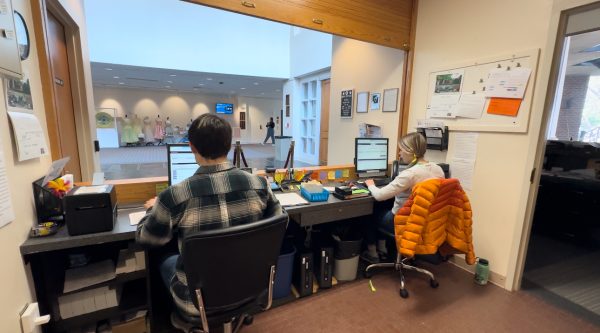MESA series discusses ISIS videos
Lecture on ISIS talks about the influence of video propaganda
February 17, 2016
Washington and Lee’s Middle East and South Asian Studies Global Fellows Series continued with a lecture from Dr. Nico Prucha of King’s College, London on Feb. 10. The lecture was delivered in the Hillel Multipurpose Room to a packed audience of students, professors and members of the local community.
Titled “The Islamic State and the War for Hegemony in the Middle East,” Prucha’s lecture focused on the Islamic State’s use of video propaganda to reinforce their authority and recruit new followers.
Prucha described ISIS as “a visual culture where videos matter because they are the most important mouthpiece to show the manifestation and implementation of jihadist creed.”
After showing a compilation of ISIS propaganda videos in both English and Arabic, Prucha highlighted several reasons why ISIS’ videos are successful.
“ISIS is innovative, it is coherent… the quantity and quality of ISIS’ videos is simply unprecedented,” Prucha said. “They have a coherent message and a high level of integrity that’s based on Arabic language texts.”
Elizabeth Schmitz, ‘17, echoed Prucha’s assertion.
“I think a lot of the media views of ISIS and terrorist groups tends to be reductive… It’s not to be denied that ISIS is one of the most brutal and barbaric groups in the world today,” Schmitz said, “but viewing them as simplistic and unsophisticated is not practical or reflective of the actual situation.”
One of ISIS’ innovations is the use of Go-Pro cameras for filming events, such as suicide bombings, executions and enforced closings of shops and businesses.
“Go-Pros play an important role,” Prucha said. “We use Go-Pros in Austria when we ski on the mountains. In ISIS land, you use Go-Pros to document your attack.”
Prucha also displayed research showing that many who watched ISIS’ propaganda videos do so on a mobile phone.
“It’s a very mobile movement with supporters who have a high degree of mobility with mobile devices. That’s part of the cultural aspect,” Prucha said. “It’s a drumbeat. A 24/7 drumbeat of who we are, why we fight, what we do, pledge our allegiance to the flag. Sunni extremists are human beings… and they project very human messages. That’s how they maintain their consistency and their coherence.”
Prucha emphasized the importance of recognizing the threat of ISIS video propaganda.
“This is the coherence of our adversaries,” Prucha said. “We finally need to deal with it. Otherwise, we are going to simply continuously have similar talks like this one.”
Schmitz agreed. “These videos are not meant to only showcase brutality, they are meant to attract people to the Islamic State — they show infrastructure, community, law — elements that make a cohesive society. This use of media is unprecedented and… this makes ISIS’s propaganda skills perhaps more frightening.”
Prucha described the steps his project, VORTEX, has taken to combat the spread of ISIS propaganda in Europe.
Working with the “world’s largest Sunni Muslim community” in Indonesia, a community that has combated Sunni extremist ideas in the past, VORTEX works to challenge ISIS’ hegemonic claims.
“We seek to create an inter-Muslim debate… and ideally diminish the hegemony ISIS holds online and produce content that can be used in offline environments.”












